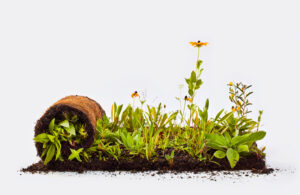All things water and irrigation
After a long, hot summer during which your irrigation system has been tested, it’s time to assess all things related to water and irrigation. Do the assessment now. The evidence — turfgrass performance — is right in front of you, and the experiences of summer are still fresh in your mind.
Turfgrass performance
Did the turfgrass meet the demands of golfers? Did the irrigation management help achieve the performance criteria established for the golf course? Identify wet and dry areas. Devote time to figure out why these areas were wet or dry and formulate a plan to correct these shortcomings this fall.
Check the distribution of water to make sure it is as uniform as possible. Conduct a catch-can analysis so you have data to help plan your actions. The uniformity data also can be used to make an effective case for irrigation system upgrades.
Irrigation supply
Now is the time to assess the reliability of your irrigation supply and ensure you received the volume of water you expected. Talk with your water provider to understand their situation. At the end of the summer, your water provider will have the best handle on the current situation and can offer thoughts on the water supply for next year.
Get your water tested by a reputable testing lab. In late summer, water quality is generally at its worst, due to the low volume of water in rivers, streams, lakes and reservoirs. Low volume means that salts are most concentrated, so now is the best time to test water.
Have you identified a back-up water supply in case something unforeseen happens to the primary water supply? While this is easier said than done, it is critical that you have a back-up supply or a large amount of water storage capacity onsite to get you through an emergency.
Routine, preventive maintenance on your pump station is always a good idea. So is a thorough inspection of your irrigation system. Make sure every sprinkler head is level, free of obstructions and performing at its best. Do it now, before fall settles in and your attention will have to be devoted to other projects.
Did you record water use during the irrigation season? In some locations recording water use is a requirement. If it is not a requirement, you should still record water use on a daily basis so you can become a more efficient water user. Also, hard data to support your claims about water use is invaluable. Without data, it is just your word against theirs.
Prioritize water use
Do you have a written priority system for which areas of the golf course will be watered and which will not? If you don’t have an established written priority system, prepare it now while you can show the leaders of the golf club what the turf looks and plays like near the end of the period when the irrigation system is used the most. Seeing turf conditions will make developing the policy easier.
If you have a written priority system for water use, was it effective? Did the highest priority areas receive all the water needed? How did the golf course play? Make changes to the water priority policy now while all the golfers can see the impact of the previous policy and the value of the changes.
While cooler weather and football might be on your mind, use the results of the 2013 irrigation season that are right in front of you to make improvements for 2014.
Clark Throssell, Ph.D., loves to talk turf. Contact him at clarkthrossell@bresnan.net.












